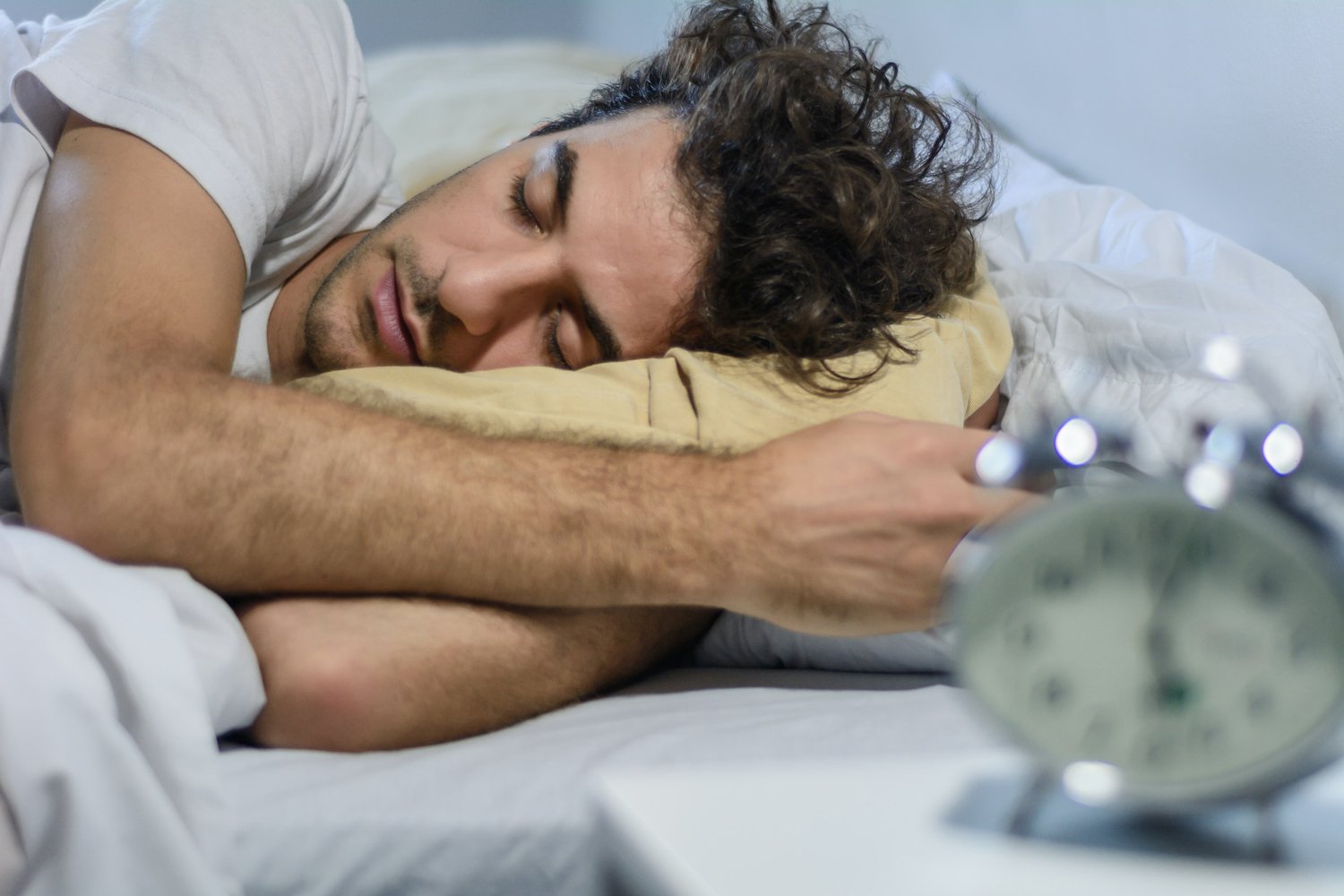
Green Noise for Sleep—what’s all the fuss?
When a topic begins to monopolize the collective conversation, it makes you curious. What is it? How does it work? Why is it significant? Suddenly, there’s a lot of talk about Green Noise within the noises that help you sleep category.This leaves one wondering how it compares to the traditional White, Pink and Brown noises usually occupying this space. It’s nice to have options, but how is it special? Is it just a passing TikTok fad? Or is it finally coming into its own as a sleep sound? So, let’s dive in… green noise for sleep—what’s all the fuss?
In this post we’ll take another look at the colors of noise – however, this time, we’ll only be focusing on those noise colors believed to aid sleep. White, pink, brown, and now green. We’ll explore their properties and uses—and what benefits they can offer when it comes to helping us sleep better.
Colored Noise for Sleep overview
The world is a noisy place and some of the sounds that enter our ear canals aren’t perceived as pleasant—especially when they wake us up or prevent us from falling asleep. This doesn’t necessarily have to mean they are loud—the drip, drip, drip of your leaky faucet may be just as disruptive to your sleep as your neighbor’s barking dog.Furthermore, it’s often less about the noise itself, and more about the sudden, jarring change of sound within your sleep environment.
All that aside, regardless of whether it’s the snoring partner in bed next to you, street noise, or a startling clap of thunder, the noise is unwelcome and the sooner you can end it, the better. Since we often can’t simply silencethe noise that’s bothering us, the best solution is to block it out by using another noise to replace that bothersome sound you don’t want to hear with something less offensive. Or better yet, with a sound you’ll actually find soothing like a colored noise known to promote sleep. In this case, your color noise options are white, pink, brown—or green noise.

Impulsive noises--like thunderclaps, are the hardest to block out. Regardless of the color noise you choose, you'll need some robust noise masking technology to not hear them at all.
Disruptive Noise Types
Before going further, let’s take a moment to review the different noise types we encounter regularly. The ones that wake us up—or prevent us from falling asleep in the first place. This is important because finding the right solution to your noise problem depends on the type of noise you’re dealing with:
- Continuous Noise: Like it sounds, continuous noise runs without interruption. Compare it to your upstairs neighbor who likes to vacuum in the middle of the night.
- Intermittent Noise: A mix of rapidly increasing and decreasing noise. Think changes in washing machine cycles—or maybe you’re living in a flight path.
- Impulsive Noise: Sudden sonic blasts such as a car alarm—or your partner’s abrupt snore burst—harder to deal with because it’s close by.
- Low-frequency Noise: Background noise we typically tune out during the day, like the hum of a nearby power grid.
Reducing low frequency noise is a matter of modifying either the source of the noise—or the environment you’re in. Usually not possible. Low-frequency noise travels easily and quickly over long distances, making it the most difficult noise to control. Thankfully, it’s not what’s keeping most of us up at night, so we’ll focus on the other three.
What is Colored Noise?
A sound wave may be broken down into two fundamental characteristics
- Frequency: How fast the waveform vibrates per second—one hertz is one vibration per second
- Amplitude: The size—or power—of the waves
Sonic hues are loosely analogous to Light hues. For instance, White Noise contains all audible frequencies—likewise, White Light contains all visible-range frequencies. The noises we encounter in daily life, consist of sporadic waveforms, representing a random distribution of frequency and amplitude. The spacing of these frequencies creates harmonic structure that provides a sound’s unique tone—making it more—or less—pleasing to the ear. This is the way we’ll be looking at Green Noise and the other sleep sounds.

Listening to sounds that emulate nature can transport us to a state of total relaxation—making it easier to fall asleep quickly.
Noise Colors for Sleep
Millions of us suffer poor sleep due to noise disruptions and the consequences are undeniable. Compromised immune systems, declining job productivity, and damaged relationships for starters. Because our brains need less-disrupted sonic surroundings to experience restorative sleep, we seek to block out disturbing sounds by any means possible. We’ll try anything from over-the-counter earplugs—to pillows—to hunting earmuffs. Trouble is, not one of the aforementioned ear-defenders will protect you from banging pipes, sirens, or your partner’s snoring.
Colored noise, however, distracts your brain with tones that emulate soothing nature sounds. These sleep sounds have the effect of tuning out disruptive noises and calming nerves to help one relax so they can fall asleep. Depending on the technology used to deliver the sounds to the ear, the offending noise may be muffled, reduced, or blocked out completely.
White Noise
The color noise most people are familiar with is White noise. It mixes all audible frequencies in equal measure. This produces a high-pitched noise that basically sounds like static, or sometimes a hiss. White noise has long been used to lessen effects of ambient/background noise. Typically, this comes from using a fan or some type of white noise machine.
It should be noted that while the term background noise may sound innocuous, in reality, what you’re dealing with is sound interference which amounts to a form of noise pollution. This noise term is most often noted during the day, but it follows into our sleep time and these continual sound interruptions can cause an array of health effects ranging from stress and high blood pressure to hearing impairment.
Seriously?
Yes, you heard that right, some noises you hear in your sleep can damage your hearing. In fact, according to Healthy Hearing, years of loud snoring may permanently damage sensitive hair cells in the ears which can result in sensorineural hearing loss.
Snoring can be measured in decibels. The National Institute of Health provides this reference as a guide to its intensity…
- Mild: 40-50 dB
- Moderate: 50-60 dB
- Severe: 60 dB
But this doesn’t take into account the reports of snoring up to 120 dB which is as loud as a thunderclap. Even worse, though a thunderclap is loud and startling, it is over in a flash—the snoring however—continues…seemingly forever.

Loud snoring is another "impulsive noise" and it has ruined many relationships. Fans and noise machines are limited when it comes to snoring—no matter which color noise you're using.
No kidding.
One of the loudest documented snores comes from a grandmother in the UK. She was recorded at 111.6 dbs. Louder than a jackhammer. This is 61 dB louder than the average snorer and capable of drowning out a washing machine, a diesel truck, or even a low-flying jet. I guess this qualifies in a perverse sort of way as noise masking? Ok, maybe not…
The point is, noise interference is serious—especially when it prevents our ability to get healthy, sleep. Colored noise can help save your weary ears by drowning out those intrusive noises. Whereas Grandma’s snoring will have you clawing the ceiling, a more pleasant sound—something that sounds like a soft rain, or wind rustling through the leaves—may be just what the doctor ordered. Even the high-pitched whir of a fan, may have you weeping with relief.
Back to White Noise and Sleep
Research hasn’t concluded exactly how White Noise improves one’s ability to sleep through disruptive noise. Is it due to an inherent characteristic of the noise relating to brain wave synchronization? Is it simply its ability to mask out background noise? Apparently, the jury is still out, but a recent study showed 38% of participants fell asleep faster while listening to White Noise.
For those who find it works for them, “why” and “how” are probably less important than the fact that they’re finally able to get some sleep. Babies certainly don’t care, and white noise has been used to help them sleep at least as far back as the 70’s. Because:
- Regardless of all the tiptoeing done around sleeping newborns, most of them sleep better with a little background noise than they do in absolute quiet.
- White noise is familiar to babies as it mimics sounds from the womb where they were calm and felt protected.
- Continuous noise drowns out unexpected sounds that can disrupt their sleep.
Not so different, really, from the reasons adults use colored noise for sleep. Let’s move on to the other sleep sounds… and get down to green noise benefits.

To many, the brain-calming tones of Pink Noise, sound a lot like softly falling rain—or a distant waterfall.
Pink Noise
Like White Noise, Pink Noise encompasses all frequencies of noise that the ear can hear. The difference is White Noise contains all the frequencies with equal distribution, while Pink Noise distributes more power at lower frequencies and less power at higher frequencies. This creates a deeper sound that is smoother and less harsh than White Noise—making it more pleasant to the human ear.
Studies have shown pink noise significantly reduces complexity in brainwaves which promotes more stable sleep. Results show people fall asleep faster and enjoy deeper sleep with fewer interruptions. This deeper sleep, which one finds more and more difficult to achieve as they age, is critical in the preservation of memory.
Pink Noise emulates sounds we hear in nature. It masks out disruptive noise with a shushing sound similar to falling rain or the rustle of leaves in the wind.
Many describe it as soothing and calming. Doctors and neurofield specialists use it to effectively treat sleep disorders including Insomnia—as well as anxiety and depression—two notorious sleep saboteurs.
Brown Noise
This noise too, contains all frequencies, but plays the lower frequencies at a louder level and plays the higher frequencies softer. Brown Noise lowers the higher frequencies more than Pink Noise, producing even lower tones that sound slightly rougher than Pink Noise. Think roaring river or strong wind in the distance.
Brown Noise received a lot of attention last year due to increased reporting on its benefits in the treatment of ADHD. Its ability to help calm and refocus the brain has benefits for sleep as well as it helps to reduce brain chatter that often keeps us awake.
The continuous deep sound of Brown Noise works well to mask background noise while also calming breathing and lowering heart rate to make it easier to fall asleep. Folks with sensitive ears tend to lean toward the more calming tones of Brown or Pink Noise for improving sleep. So, what about Green Noise benefits?

The more powerful lower-tones of Brown Noise produce a sound that emulates that of a roaring river.
And finally, what does Green Noise do?
Well, this was a puzzler. According to mediacollege.com, Green Noise is not an officially recognized term. They offer, instead, these two commonly recognized definitions:
- “The mid-frequency component of White Noise”
- “The background noise of the world, a sort of new-age description of ambient noise averaged from several different outdoors locations. Similar in sound to Pink Noise with an emphasis on the range around 500Hz”
Wasn’t expecting that after all the latest Green Noise buzz… So, sounds to me like Green Noise is something like what you hear when you go camping—like someone’s blended together select outdoor settings—and like it doesn’t quite fit into Color Noises as we know them. The NIH has published a resource on the effects of colored noise on sleep, but I found no clarification on Green Noise there.
Looking for more info...
- One blog refers to Green Noise as a frequency of White Noise (matches description 1 above) and goes on to say, “it reminds people of nature more than any other frequencies.” Maybe because we’re actually listening to nature noise rather than noise that emulates nature sounds?
- Dr. Laura Purdy, psychologist and primary care physician has been quoted as saying Green Noise is an “ambient noise in nature.”
Still trying to get clarity here… but come to think of it, I had trouble finding info on Green Noise the last time I mentioned it among the other colored noises—before all the internet buzz. All the info I could gather at that time was that it’s a very low frequency noise with “nature sound” qualities—used therapeutically for sound masking and relaxation.
And I guess that’s really the bottom line, isn’t it? Green Noise can mask obtrusive noise, and it helps you relax. Which is the goal of the other Color Sleep Noises. But is it more pleasant or effective than the traditional sleep sounds?
It all comes down to preference—and what sounds good to one person’s ears, might not be preferable to yours. Color Noise sampling is readily available online. Take time to find the sleep noise that’s right for you.
Overall, this field of science holds a lot of promise and continues to grow in popularity. More importantly, Color Noise Therapy is showing some real results across different aspects of human health. This drug-free alternative for better sleep is great news for the millions of US adults who suffer the consequences of poor sleep. Which Noise will you choose?

The right noise masking technology will allow you to sleep all night, every night—even through impulsive noise like snoring, barking dogs, and thunderstorms.
Lastly, a reminder on Sleep Sound delivery…
Regardless of how much you enjoy your personal sleep sound, its ability to mask out unwanted noise is highly dependent on how that sound is delivered to your ears.
Electric fans won’t block the noise completely (and you may have unexpected effects like allergies, dry skin, sore throats, snoring, or sore, stiff muscles.) Sound machines won’t fully block the noises either—the noise will be softened, but you’ll still hear it.
What you need is a combination of active and passive noise masking.
You’ll find that perfect noise blocking combination in SoundOff earbuds. Soothing, Pink Noise is the active part to help lull you into peaceful sleep. Comfortable memory foam tips use your body heat to form a seal around the earbud to make sure no ambient sounds enter your ear canal. You’ll also find this type of delivery system is the only way to deal with those Impulsive Noise blasts like snoring and barking dogs. Give SoundOff a try—you’ll LOVE what you can’t hear!
Until next time…
Wishing you noise-free sleep!




